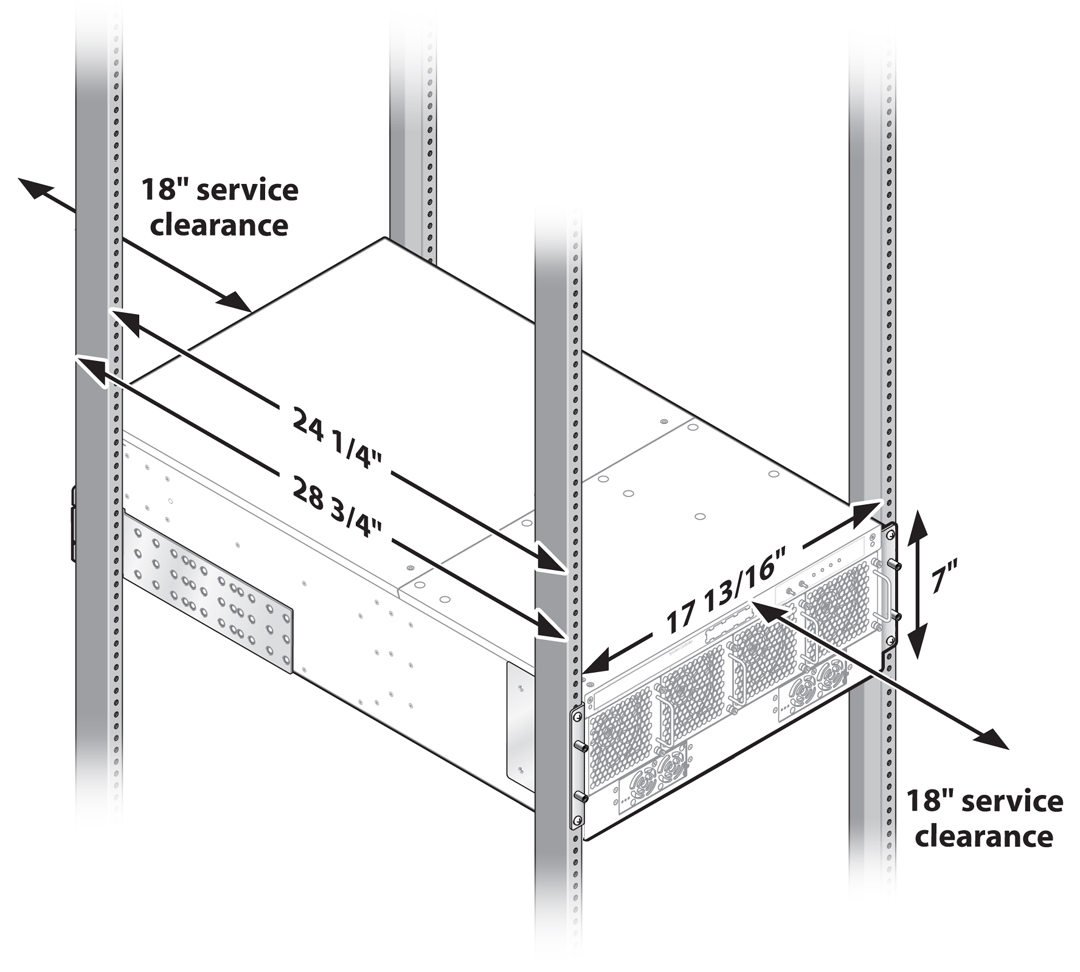Fabric Interconnect F1-15 Site Criteria
Verify that your installation site meets the following criteria for the Fabric Interconnect F1-15:
Power: 100-127 / 200-240 VAC 12 A at 100 volts or 7.68 A at 180 volts 47- 63 Hz 1220 W (maximum) with chassis fully loaded
Each power supply should be connected to a separate 15-20 A AC branch circuit. Do not exceed the maximum power cord length of 15 feet (4.57 m).
Environmental: Operating Temperature 5-35 ℃ Maximum Recommended Operating Temperature (Ambient) 35 ℃ Relative Humidity (non-condensing) 10-80% at 35 ℃ Operating Altitude 2000m (maximum)
Cooling: The front and back of the chassis must be free of any obstruction to the airflow (front-to-back)

Caution - Air vents must not be blocked and must have free access to the room ambient air for cooling. Installation of the equipment in a rack should be such that the amount of airflow required for safe operation of the equipment is not compromised.
System Noise: 72 decibels (dB) with all fans operating at full speed
Select a location in the rack in which to install the Fabric Interconnect. The location must accept a chassis with the following dimensions, as shown in Verifying Rack Space:
Weight: 100 pounds in shipping configuration (no I/O modules installed) 130 pounds with modules installed (the fully loaded weight will differ depending on the number and type of modules installed.)
-
Note - The Oracle Fabric Interconnect has cable-management brackets that can be mounted on the chassis as an option. It is your choice whether or not install the cable-management brackets.
Figure 1 Verifying Rack Space
